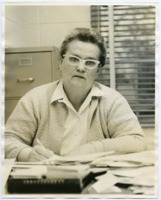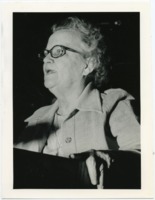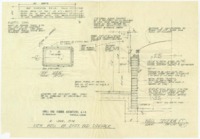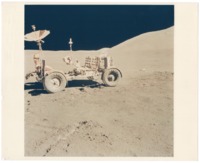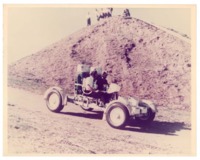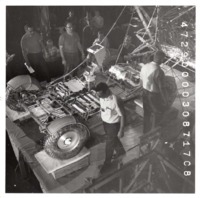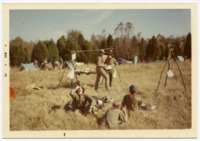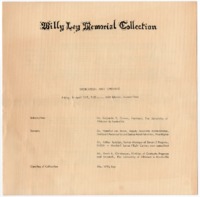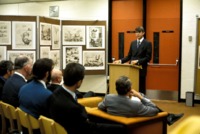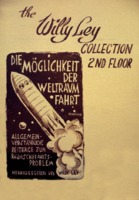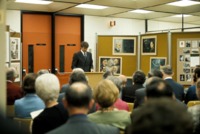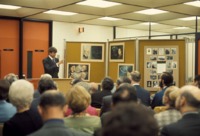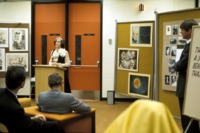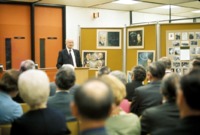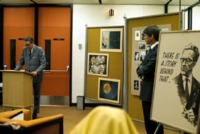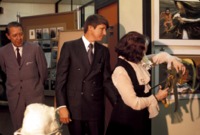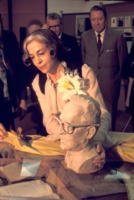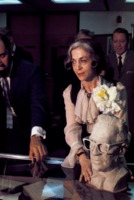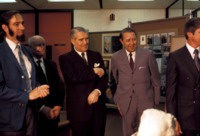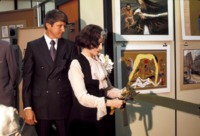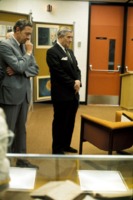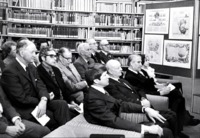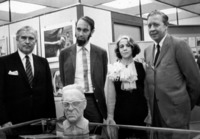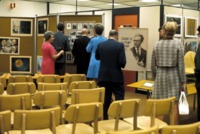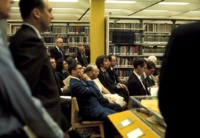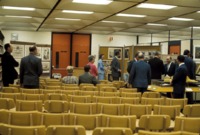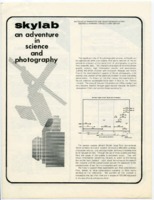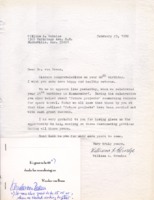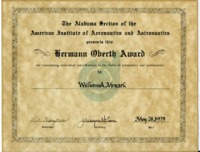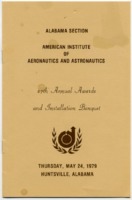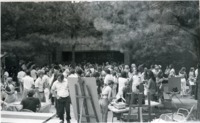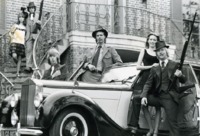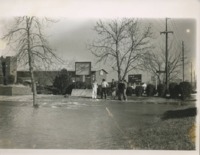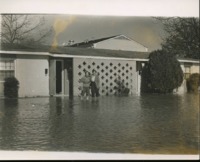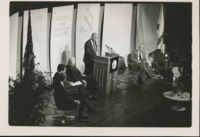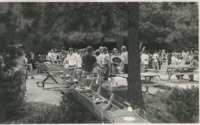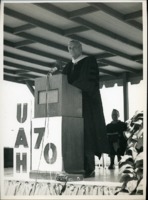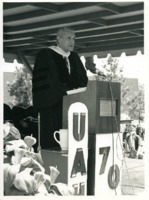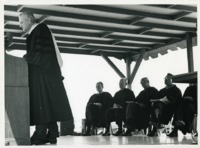
Browse Items (397 total)
Sort by:
-
Drawings of a sidewalk well and rail on Courthouse Square in downtown Huntsville, Alabama.
The drawings include plans for a building a well in the sidewalk with a glass top for viewing the "old handmade brick walk" underneath the current sidewalk. In one of the notes, architect Harvie P. Jones notes that the historic sidewalk probably dates from the early to mid-nineteenth century "based on its depth of approximately 10" below the present walk." The well is located in front of 205 East Side Square. It was restored in 2018. -
The lunar roving vehicle (LRV) on the Moon.
This photo shows the LRV on the moon at the Hadley-Appenine mountain range landing site during the Apollo 15 mission. Developed by Marshall Space Flight Center and built by Boeing, the LRV was an electric vehicle used to explore the Moon's surface during the Apollo 15, 16, and 17 missions. -
Two astronauts driving a test model of the lunar roving vehicle (LRV).
Developed by Marshall Space Flight Center and built by Boeing, the LRV was an electric vehicle used to explore the Moon's surface during the Apollo 15, 16, and 17 missions. -
The lunar roving vehicle (LRV) during its construction.
Developed by Marshall Space Flight Center and built by Boeing, the LRV was an electric vehicle used to explore the Moon's surface during the Apollo 15, 16, and 17 missions. -
Program from the dedication and opening of the Willy Ley Memorial Collection at the UAH Library.
The program includes a diagram of the arrangement of the collection, a brief biographical sketch of Ley, and a program for the "Ley Memorial Symposium on Science and Technology in the 1970's." Willy Ley died in 1969. The UAH Library purchased his book collection from his widow, Olga Ley, in 1970. -
David Christensen speaking at the dedication of the Willy Ley Collection at the UAH Library.
Christensen then worked in the Division of Graduate Programs and Research at UAH. The UAH Library purchased the Willy Ley Collection from Ley's widow, Olga, in 1970. -
Painted sign advertising the Willy Ley Collection at the UAH Library.
Today this sign is on display in the Archives and Special Collections reading room on the ground floor of the library. The UAH Library purchased the Willy Ley Collection from Ley's widow, Olga, in 1970. -
David Christensen speaking at the dedication of the Willy Ley Collection at the UAH Library.
Christensen then worked in the Division of Graduate Programs and Research at UAH. The UAH Library purchased the Willy Ley Collection from Ley's widow, Olga, in 1970. -
David Christensen speaking at the dedication of the Willy Ley Collection at the UAH Library.
Christensen then worked in the Division of Graduate Programs and Research at UAH. The UAH Library purchased the Willy Ley Collection from Ley's widow, Olga, in 1970. -
Olga Ley speaking at the dedication of the Willy Ley Collection at the UAH Library.
David Christensen is standing at the right. The UAH Library purchased the Willy Ley Collection from Mrs. Ley in 1970. -
Arthur Rudolph speaking at the dedication of the Willy Ley Collection at the UAH Library.
At the time, Rudolph was retired from NASA as the former manager of the Saturn V program at Marshall Space Flight Center. The UAH Library purchased the Willy Ley Collection from Ley's widow, Olga, in 1970. -
Ben Graves speaking at the dedication of the Willy Ley Collection at the UAH Library.
Graves was the president of UAH at the time. David Christensen is standing at the right, next to a sign painted to advertise the collection. The UAH Library purchased the Willy Ley Collection from Ley's widow, Olga, in 1970. -
Olga Ley cutting the ribbon at the opening of the Willy Ley Collection at the UAH Library.
The UAH Library purchased the Willy Ley Collection from Mrs. Ley in 1970. -
Olga Ley positioning a bust of Willy Ley on a display case.
Wernher von Braun and UAH President Ben Graves can be seen in the background. The UAH Library purchased the Willy Ley Collection from Mrs. Ley in 1970. -
Olga Ley positioning a bust of Willy Ley on a display case.
Wernher von Braun and UAH President Ben Graves can be seen in the background. The UAH Library purchased the Willy Ley Collection from Mrs. Ley in 1970. -
Jean Perrault, Arthur Rudolph, Wernher von Braun, and Ben Graves at the dedication of the Willy Ley Collection at the UAH Library.
Perrault was the director of the UAH Library at the time. Rudolph had retired from NASA from 1969 and von Braun was then working as Deputy Associate Administrator of NASA in Washington, D.C. The UAH Library purchased the Willy Ley Collection from Ley's widow, Olga, in 1970. -
Olga Ley cutting the ribbon at the opening of the Willy Ley Collection at the UAH Library.
The UAH Library purchased the Willy Ley Collection from Mrs. Ley in 1970. -
Wernher von Braun and Ben Graves at the dedication of the Willy Ley Collection at the UAH Library.
The UAH Library purchased the Willy Ley Collection from Ley's widow, Olga, in 1970. -
Dedication of the Willy Ley Collection at the UAH Library.
On the front row, left to right, are David Christensen, Arthur Rudolph, Wernher von Braun, and Olga Ley. The UAH Library purchased the Willy Ley Collection from Ley's widow, Olga, in 1970 -
Wernher von Braun, Jean Perrault, Olga Ley, and Ben Graves at the dedication of the Willy Ley Collection.
The UAH Library purchased the Willy Ley Collection from Mrs. Ley in 1970. -
Attendees at the dedication of the Willy Ley Collection at the UAH Library.
The UAH Library purchased the Willy Ley Collection from Ley's widow, Olga, in 1970. -
Attendees at the dedication of the Willy Ley Collection at the UAH Library.
The UAH Library purchased the Willy Ley Collection from Ley's widow, Olga, in 1970. -
Attendees at the dedication of the Willy Ley Collection at the UAH Library.
The UAH Library purchased the Willy Ley Collection from Ley's widow, Olga, in 1970. -
"Skylab: An Adventure in Science and Photography."
This leaflet gives an overview of types of film and camera systems being used in photography and observations on Skylab, the first space station launched by the United States. -
Correspondence related to Wernher von Braun's sixtieth birthday.
The materials include a congratulatory note from William A. Schulze to von Braun, in which he notes, "To me it appears like yesterday, when we celebrated your 25th birthday in Kummersdorf." Von Braun's response, handwritten on a card, reads: "It was also great to be 25 or so, when we started working together!" Enclosed are instructions from Eberhard Rees encouraging Marshall retirees to send von Braun personalized birthday wishes for inclusion in a bound volume later. -
Hermann Oberth Award certificate presented to William A. Mrazek.
Mrazek was the 1978 recipient of the Oberth Award. During his career, Mrazek worked on the design and development of the Jupiter ICBM, Jupiter-C, and Saturn launch vehicles. He retired from Marshall Space Flight Center as the Associate Director for Engineering in Project Development in 1973. -
Program from the Alabama Section of the American Institute of Aeronautics and Astronautics 27th Annual Awards and Installation Banquet.
The program includes the presentation of the Hermann Oberth Award to William A. Mrazek. -
Students in costume at the Noojin House.
The photograph was taken for a summer 1979 issue of the UAH student newspaper, the Exponent. -
Flooding at UAH Community Housing.
The flood was caused by a broken pipe. Community Housing was located at the corner of Lancewood Drive and University Drive. The Twin Oaks Apartments can be seen in the background. -
Students wading in floodwater at UAH Community Housing.
The flood was caused by a broken pipe. Community Housing was located at the corner of Lancewood Drive and University Drive. -
Panelists onstage at the SALT II and American Security Conference held at the Von Braun Civic Center in Huntsville, Alabama.
UAH organized the conference as part of the annual John Sparkman Symposium on United States Foreign Policy. According to the 1979 conference proceedings, the symposium was "founded to bring major issues in United States foreign policy to public discussion by providing a forum in which scholars and experts from government or the private sector might meet." The conference featured speakers including historians, military officers, political scientists, and politicians from Huntsville and across the United States. -
Eric Sevareid speaking at 1970 commencement.
Sevareid was a news journalist and war correspondent for CBS. -
Eric Sevareid speaking at 1970 commencement.
Sevareid was a news journalist and war correspondent for CBS. -
Eric Sevareid and UAH officials onstage at 1970 commencement.
Sevareid was a news journalist and war correspondent for CBS.
